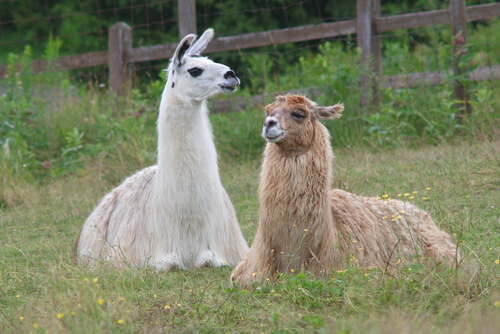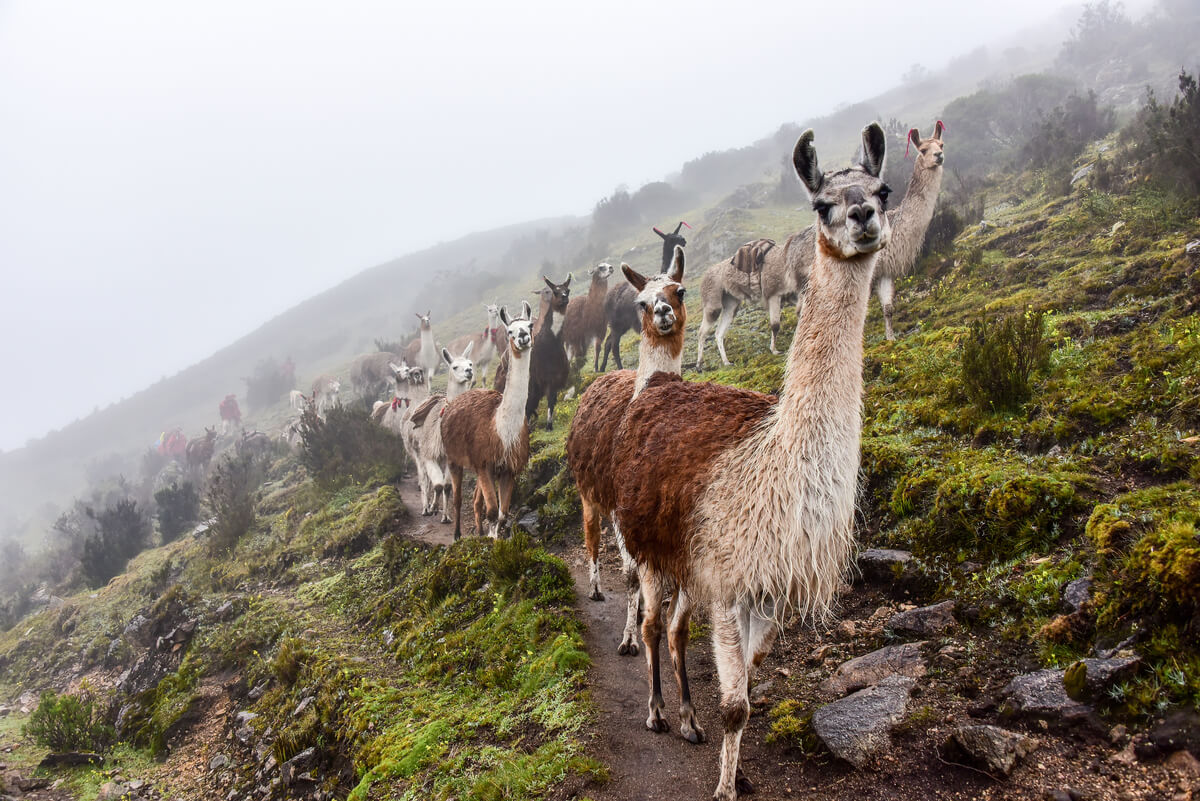How to Tell the Difference Between Llamas and Alpacas

Both are adorable, with strong personalities and fluffy fur. However, they’re different species, and today we’re going to tell you how to tell the difference between llamas and alpacas.
These two animals have often been considered one and the same since they began to undergo the domestication process, so differentiating them taxonomically has been a challenge for researchers. Here you’ll be able to learn the main differences between the two species, so don’t miss it.
Similarities between llamas and alpacas
Why are these two species so often confused? It’s true that their appearance is similar, woolly fur, a long, slender neck, they spit when angry, and are gregarious. In fact, they live in similar habitats and both are herbivores, and so it’s quite normal not to know how to tell llamas and alpacas apart at first glance.
Both the alpaca and the llama are distributed in northern Argentina, western Bolivia, northeastern Chile, Ecuador, and in the Peruvian Andes.
Taxonomically, both the llamas and alpacas belong to the camelid family, to which camels, dromedaries, vicuñas and guanacos also belong. All of them are artiodactyl mammals (ungulates with an even number of toes).
In addition, both of them are also ruminant species, which means that they first make a first phase of digestion in the stomach cavity called rumen and then regurgitate it. Once it returns to the mouth, they chew the cud again to promote its subsequent fermentation.

What are the differences between llamas and alpacas?
Despite these similarities, the differences between these two camelids are substantial and not only with respect to their appearance. Let’s get to know them a little better and characterize llamas and alpacas by comparing them – keep reading!
1. Taxonomy
As mentioned in the introduction, the classification of llamas and alpacas has been a challenge for taxonomists. Finally, at the beginning of the 21st century, the alpaca was named Vicuña pacos and the llama Lama glama.
However, the four species of camelids that inhabit South America can hybridize with each other and give rise to fertile offspring. In fact, extensive DNA studies revealed that alpacas are more closely related to vicuñas than to llamas. These in turn are closer (biologically speaking) to guanacos.
2. Appearance
The main and most striking difference between llamas and alpacas is their appearance. If you look at them separately, you may well find more similarities than differences, but if you look closely you’ll be able to see the following traits:
- Size: Alpacas are smaller than llamas. They’re not usually more than one meter (3.3 feet) tall up to the withers, while llamas reach 150 cm (5 feet) in height without counting their neck and head.
- Neck: Llamas’ necks are longer than alpacas’. The latter, however, has a more upright and straight appearance.
- Ears: Alpacas have rounded ears, but a llama’s is pointed and more triangular.
- Muzzle: Llamas have a longer and more pronounced muzzle.
- Coat: A llama’s coat is coarser, while an alpaca’s is softer to the touch. Alpacas also have a greater variety of colors.
3. Behavior
Although both species are gregarious and sociable with humans, the truth is that llamas are much bolder than alpacas. The latter have a more timid and withdrawn character, which makes it more difficult to gain their trust.
Alpaca herds tend to mix with other animals, such as llamas and sheep, and live together peacefully.
4. Exploitation
Llamas began to be exploited some 6000 to 7000 years ago in the Peruvian Andes. There they were used as pack animals, as they were able to carry weight and walk along mountain roads between villages.
On the other hand, the alpaca is mainly used for its wool, which is used to make high-quality garments. Their feces are also used to fertilize crops and they’re used for their meat too.

The differences between llamas and alpacas are noticeable if you have the opportunity to interact with them. But even then it can sometimes be difficult, as hybridization between both species is increasing, which threatens the population of each one of them. This phenomenon is man-made and began with the Spanish conquest.
That’s why it’s vitally important to get to know the camelids of South America and their wonderful characteristics. To learn about them is to give them their identity, and to recognize them as sentient beings is to respect and empathize with these animals. That’s the first step to preserving the most iconic species of each region, and llamas and alpacas deserve no less.
All cited sources were thoroughly reviewed by our team to ensure their quality, reliability, currency, and validity. The bibliography of this article was considered reliable and of academic or scientific accuracy.
- Lama glama (llama). (s. f.). Animal Diversity Web. Recuperado 21 de abril de 2022, de https://animaldiversity.org/accounts/Lama_glama/
- Lama pacos (alpaca). (s. f.). Animal Diversity Web. Recuperado 21 de abril de 2022, de https://animaldiversity.org/accounts/Lama_pacos/